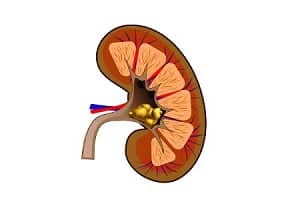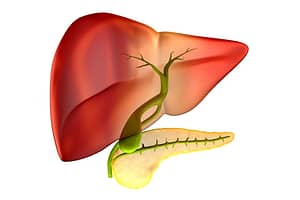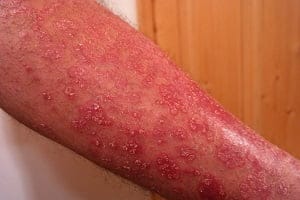
What is leukemia in children (Blood cells cancer in children)?
In children and teens, leukemia is the most common cancer accounting for almost 1 out of 3 cancers. However, overall, leukemia is a rare cancer in children.
Types of leukemia in children: What is the most common age for developing childhood leukemia?
Among various types of leukemias in children and teens, acute lymphocytic leukemia (ALL) is the most common and accounts for about 3 out of 4 leukemias followed by acute myelogenous leukemia (AML).
ALL occurs most commonly in early childhood, peaking between 2 and 4 years of age. AML has slightly broader age range. It is more common during the first 2 years of life and during the teenage years.
Hispanic and white children are at greater risk to get ALL than African-American and Asian-American children. ALL is more common in boys than in girls. AML occurs about equally in all races with boys and girls having almost equal chances of developing this cancer.
Chronic leukemias are not very common and are rarely seen in children. Chronic myelogenous leukemia (CML) is most common in this category of cancer but it tends to occur more in teens than in younger children.
Another type of leukemia is Juvenile myelomonocytic leukemia (JMML) which usually occurs in young children, with an average age of about 2.
More: What is leukemia?
More: What are the various types of leukemia?
What are the causes and risk factors for childhood leukemia? What causes leukemia in children?
The cases of leukemia in children are not completely known. But there are some factors that are thought to raise the chances of a child getting leukemia. However, most of the children getting leukemia don’t have any risk factor associated with them.
Various risk factors for childhood leukemia are:
- An inherited genetic syndrome such as Down syndrome, Li-Fraumeni syndrome or Klinefelter syndrome
- An inherited problem of immune system such as Ataxia-telangiectasia, Wiskott-Aldrich syndrome, Bloom syndrome, Schwachman-Diamond syndrome
- Having a brother or sister with leukemia especially in case of identical twins
- Exposure to chemotherapy, radiation or chemicals such as benzene
- Immune system suppression treatment in case of an organ transplant
Symptoms of childhood leukemia: Signs your child has leukemia
The symptoms manifested by leukemia can vary from one child to another. Chronic leukemia generally develops slowly and the symptoms of chronic leukemia appear very late. But the symptoms due to acute leukemia can appear suddenly. However, some of these symptoms can be confused with those of common childhood medical conditions and diseases. Presence of any of the below listed symptoms doesn’t always confirm that your child has leukemia.
Common signs and symptoms of childhood leukemia include the following:
Bleeding and bruising (frequent nosebleeds in children leukemia)
Frequent nosebleeds in children leukemia is quite common. Even a minor injury can lead to excessive bleeding in a child with leukemia. In case of nosebleed, the child may bleed more than expected. The child may also bruise easily. They may also have petechiae which is presence of small red spots on the skin. These patches occur due to the broken capillary blood vessels which have bled.
A child with leukemia has abnormally low platelet count. Platelets are responsible for blood’s ability to clot. Deficiency of healthy platelets results in poor blood clotting and excessive bleeding.
Stomach ache and poor appetite
Leukemia cells generally accumulate in the kidney, liver and spleen, resulting in their enlargement. This, in turn, causes a stomach ache. Your child’s doctor may be able to feel these enlarged organs during a physical examination of the child.
The child may also complain about poor appetite or is unable to eat normal amount of food which result in common problem of weight loss.
Breathing trouble
Children with leukemia may experience difficulty in breathing – a condition called as dyspnea. This happens because the leukemic cells clump around the thymus, which is a gland at the base of the neck. It can also result from swollen lymph nodes in the chest that push up against the windpipe.
Cough or wheeze is a common condition in children with leukemia due to pressing of the windpipe. It should be noted that a painful breathing is a medical emergency. You should seek medical consultation on an immediate basis, if your child is experiencing this sign of leukemia.
Frequent infections
White blood cells (WBC) are vital part of your immune system to fight off any kind of infection, but during the leukemia, the immature WBCs are unable to perform their function properly. This gives an ample space and time to bacterial and viral infection.
A child suffering from leukemia may experience frequent or prolonged bouts of viral or bacterial infections. Fever, coughing and runny nose are common symptoms of the infection. These infections often do not respond to any antibiotic or show no improvement even with other treatments.
Swelling
Leukemia cells sometimes get collected in lymph nodes during blood filtration process by the lymph nodes and cause swelling. Common places of swelling include:
- under child’s arms
- in the neck
- above the collarbone
- in the groin
These swollen lymph nodes can be revealed by the use of MRI and CT scans which may also show the swollen lymph nodes of the abdomen or from inside of the chest.
A child may also experience swelling of the face and arms due to blockage of blood supply to these areas which is caused by an enlarged thymus. The enlarged thymus presses on a vein that transports blood from the arms and head to the heart and lead to pooling of the blood in this region.
A bluish-red colour may also appear on the head, arms and the upper chest. Swelling may precipitate other symptoms such as headache and dizziness.
Bone and joint pain
Blood is produced by the body in the bone marrow. In leukemia, there is a production of blood cells at an accelerated rate, leading to severe overcrowding of the blood cells. This aggregation of cells leads to aches and pains of the bones and joints. Some children with leukemia may experience lower back pain while others may develop a limp due to pain in the legs.
Anaemia
Overcrowding of the white blood cells may result in insufficient production of red blood cells (RBCs) and lead to a condition called anaemia. Anaemia has its own symptoms such as fatigue, pale skin, and rapid breathing. Your child may also complain of persistent feeling of weakness or light-headedness.
Reduced blood flow to the brain of your child may cause their speech to slur. A blood test will show if your child has an abnormally low RBC count.
Diagnosis and treatment of childhood leukemia
There is lack of any definitive blood test or screening program to detect leukemia before it starts showing its symptoms in children. However, there are some tests to diagnose the leukemia and also to classify them.
Initial diagnostic test for leukemia may include:
- Blood test to determine the number of blood cells and their appearance
- Biopsy with tissue sample taken from pelvic bone and bone marrow aspiration to confirm the diagnosis of leukemia
- Lumbar puncture or spinal tap test to check if the leukemia cells have spread to cerebrospinal fluid that bathes the brain and spinal cord
Blood cells from these samples are examined by a pathologist in a laboratory under a microscope. Various other tests may be employed to determine which type of leukemia your children have and how likely the cancer will respond to a treatment. These tests may also be repeated after a gap to determine the treatment progress and success.
Though early diagnosis is not possible, but it is good to know that most of the children and teens with childhood leukemia can be successfully treated.
Sometimes, before starting a treatment for childhood leukemia, children may need treatment to address leukemia complications such as infection and anaemia.
Chemotherapy: Chemotherapy is considered as main option of treatment for leukemia. In chemotherapy, your child is given anti-cancer drugs orally, into a vein or through spinal fluid. To prevent the recurrence of leukemia, your child may be kept on maintenance therapy in cycle for a period of 2 to 3 years. Sometimes, targeted therapy is also used to target specific parts of the cancer cells as a treatment option. This is found to be effective in certain types of childhood leukemia and also have less severe side effects than those with a standard chemotherapy.
Radiation therapy: Radiation therapy may be used to kill cancerous cells or to shrink the tumour size as well as to help in preventing the spread of cancer to other parts of the body. Surgical treatment is rarely an option for childhood leukemia.
Stem cell treatment for childhood leukemia: If the standard treatments fail to alleviate the condition or are less effective, a stem cell transplant is considered. In a stem cell procedure for cancer treatment, first, a whole body radiation combined with high-dose chemotherapy is administered to destroy the child’s bone marrow and then the blood forming cells are transplanted to the child.
Childhood leukemia survival rate, Childhood leukemia prognosis and outlook
To describe the cancer survival statistics, doctors always use a number called 5-year survival rate. This tells us about the percentage of patients who live at least 5 year after the diagnosis of the cancer. The 5-year survival rates of commonly found leukemias in children are the following.
- Acute lymphocytic leukemia (ALL) – 85%
- Acute myelogenous leukemia (AML) – 60% to 70%
- Juvenile myelomonocytic leukemia (JMML) – 50%
- Chronic myelogenous leukemia (CML) – 60% to 80%






